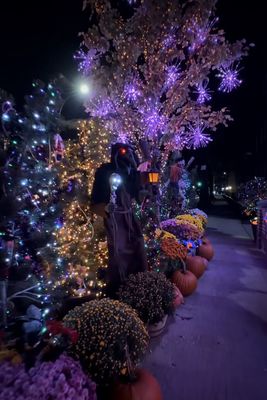Washington Square Park
Iconic arch, fountain, street performers, chess players, diverse crowds
Iconic arch, fountain, street performers, chess players, diverse crowds

























New York, NY 10012 Get directions

"I end up here not because I love it but because its chaos is part of the charm; it’s like a shitty roommate situation on a grand scale—I love everybody there, some drive me nuts, I wish we weren’t all there at the same time, and when it’s empty it’s absolute heaven; when it’s busy (any time it’s above 57 degrees), it’s the best-blended intersection of youth, culture, criminal activity, talented and non-talented performers, and both passed-out and wildly awake eccentrics." - Edward Barsamian

"At lunchtime I soak up the sun in Washington Square Park or find a bench to eat sandwiches; locals congregate here across from Mario’s, and with Little Vine only a block away it’s the obvious spot to grab a sandwich, sit on a bench, and dig in." - Matt Tillquist

"Located in the heart of Greenwich Village with a tradition of celebrating nonconformity, this landmark has been a gathering place for street entertainers, musicians, poets and chess players. From celebration to demonstration, the arch and fountain are rich in history. Most of the buildings surrounding the park now belong to NYU, but many have at one time been homes and studios for artists and public figures." - 345 Design

"I watched chess players in Washington Square Park and recommended the scene as a lively, urban cultural vignette for visitors of all ages." - Chelsee Lowe Chelsee Lowe Chelsee Lowe is a Los Angeles-based writer with an obsession with good eats and interesting stories. She regularly contributes to Travel + Leisure, TravelAge West, Ventura Blvd, and L.A. Parent, writing about food, family travel, and more. Travel + Leisure Editorial Guidelines

"If people-watching is your sport, Washington Square Park is your place. Entertainment is a given in this intimate, not-quite 10-acre space, filled with career chess players, musicians, performers, students, sunbathers, strollers, and general throngs of Greenwich Villagers, desperate for a bit of fresh air. Take your time as you go through: Pause beneath Washington Arch, honoring our country’s first president (for whom the Park is named), and observe the laurel wreaths and intricate motifs that extend from the base to the keystones, atop which twin eagles perch like constant watchmen. Washington Square Park is the beating heart of this vibrant New York neighborhood." - Melissa Liebling-Goldberg, Alex Erdekian